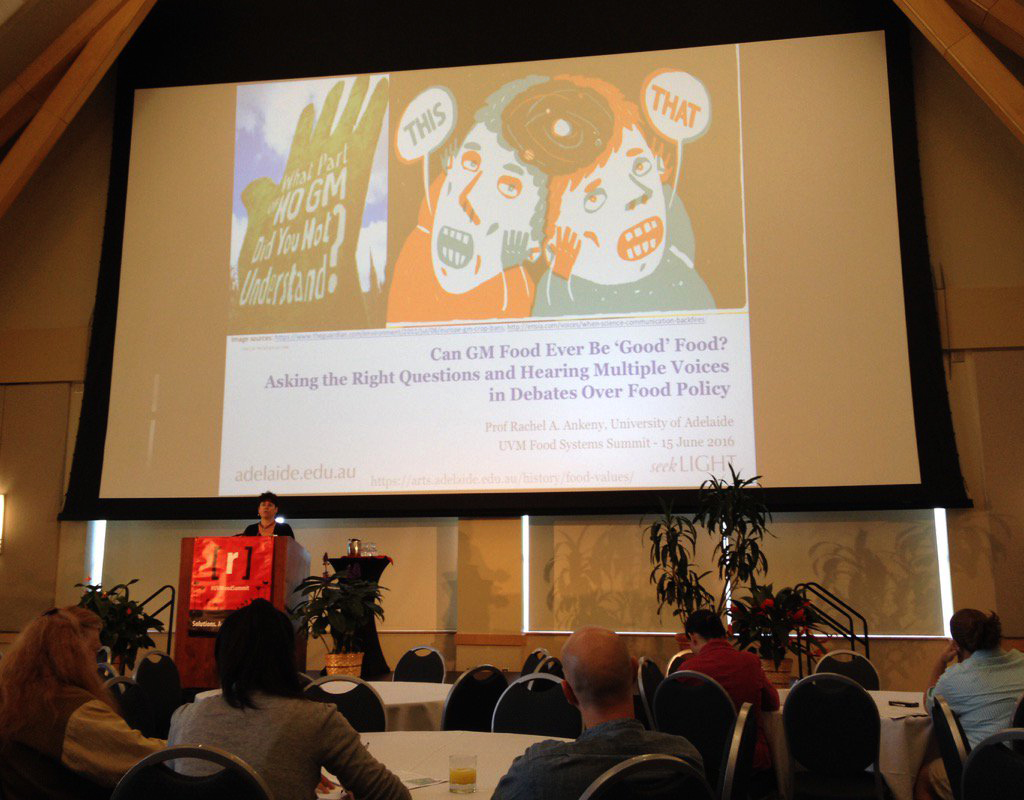By Hailey Grohman
Who decides what good food is? Is it policymakers, researchers, corporate officers, consumers? How do they decide? Using scientific evidence, cultural values, or other factors? Further, what are the effects of these decisions? This week, hundreds of food systems activists and enthusiasts filled UVM’s Davis Center for two days to pursue just these questions.

The 300-plus attendees and presenters gathered at UVM for the Food Systems Summit were asked to address some incredibly complex and salient issues, ones which forced participants to look inward and challenge their assumptions. The theme was the question of “What Makes Food Good,” one which has been dear to my heart as someone interested in food values and belief systems. To me, this central question was perfect: what else are we expressing, when we debate GMOs or worker rights or food access, but our own opinions about goodness and badness in the food system?
The three keynote speakers featured at the Summit answered this question beautifully and diversely. They provoked deep and thoughtful conversation about our own assumptions and judgements about good food. Through presentations on dietary guidelines, food justice and genetic modification, they challenged us to be better: to connect more deeply, to hear more voices, and to think more broadly. No simple task, but one of immense and constant importance.
“Sustainable food without justice is sustained injustice,” Jahi Chappell said in his keynote address, taking a quote from his friend Maria Whittaker, food activist. The other two keynote speakers, scholars Rachel Ankeny and Charlotte Biltekoff, took a slightly different perspective: “Scientific ways of knowing goodness tend to dominate the conversation,” posited Biltekoff, emphasizing the cultural and social nature of good food central to both speakers’ talks.
Panels, Presentations, and Networking
In between keynote speakers, attendees enjoyed a number of presentations, panels and breakout sessions. These sessions were chosen through a democratic voting process in the months leading up to the Summit, which added to the exchange of ideas and conversation over the course of the event. Built-in networking time and discussion periods after each keynote speech also maximized the collaborative nature of the conference.
Of course, all that deep thought was interspersed with the pleasure of great conversation and delicious meals. UVM Dining provided two impressive lunches with an eye toward reducing food waste in creative ways (turnip chips made from peels!), and American Flatbread catered an outdoor wood-fired pizza dinner at Burlington’s gorgeous Intervale center. One cannot think well if one has not dined well, as Virginia Woolf always said…
Even as a student of food systems and lifelong lover of learning, it can be so easy to lose a sense of wonder and curiosity in the subjects I have chosen. When there are so many tasks to get done on a daily basis, the big and exciting questions can take a backseat. This year’s Summit was a wonderful and needed reminder that there is still much work to be done, many issues to be pondered and collaborators to meet along the way.
-Hailey Grohman is a graduate student in food systems with research interests in food communication and media.










